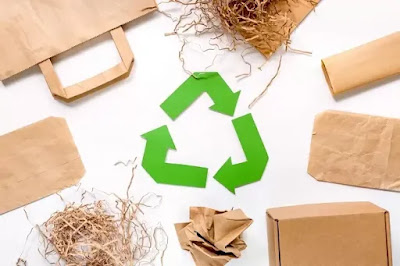Reusable packaging has become a popular trend in recent
years, as consumers and companies become more aware of the environmental impact
of single-use packaging. However, many people are still uncertain about what
reusable packaging is and whether it is actually sustainable. This blog post
will explore the concept of reusable packaging and its environmental impact.
What is reusable packaging?
Reusable packaging is defined as packaging that can be used
several times before being discarded. This can include containers, bags, and
bottles that can be refilled or repurposed. Reusable packaging is often made
from durable materials such as glass, metal, or plastic and is designed to
withstand repeated use.
The environmental impact of reusable packaging
The environmental impact of reusable packaging is generally
considered to be more favorable than that of single-use packaging. Reusable
packaging can significantly reduce the amount of waste generated, as it
eliminates the need for disposable packaging. Additionally, reusable packaging
can also help reduce greenhouse gas emissions, as it reduces the need to
produce and transport new packaging materials.
However, it's important to note that the environmental
impact of reusable packaging can vary depending on the materials used and the
way it is used. For example, a glass container may have a lower environmental
impact than a plastic container if it is reused several times. Still, if it is
broken or not properly recycled at the end of its life, it can have a greater environmental
impact.
Note: If you want to purchase reusable protective packaging
material visit britwrap.com.
Is reusable packaging always sustainable?
Reusable packaging is often considered to be more
sustainable than single-use packaging, but it is not always the best option.
There are some instances where reusable packaging may not be the most
sustainable choice. For example, if reusable packaging requires a lot of energy
to produce, transport, or clean, it may not be as sustainable as other options.
Additionally, if reusable packaging is not properly cleaned or maintained, it
can become a health hazard and not sustainable.
Additionally, it's important to consider the entire
lifecycle of the packaging, including its production, transport, use, and
disposal. If reusable packaging requires more energy to produce, transport and
maintain than single-use packaging, it may not be the most sustainable option.
Conclusion
Reusable packaging has been a popular trend in recent years
as consumers and companies have become more aware of the environmental impact
of single-use packaging. Reusable packaging is generally considered to be more
sustainable than single-use packaging because it can reduce waste and
greenhouse gas emissions. However, it's important to consider the entire
lifecycle of the packaging, including its production, transport, use, and
disposal. Therefore, reusable packaging is not always the most sustainable
option, and it's important to weigh the pros and cons before making a decision.

Comments
Post a Comment